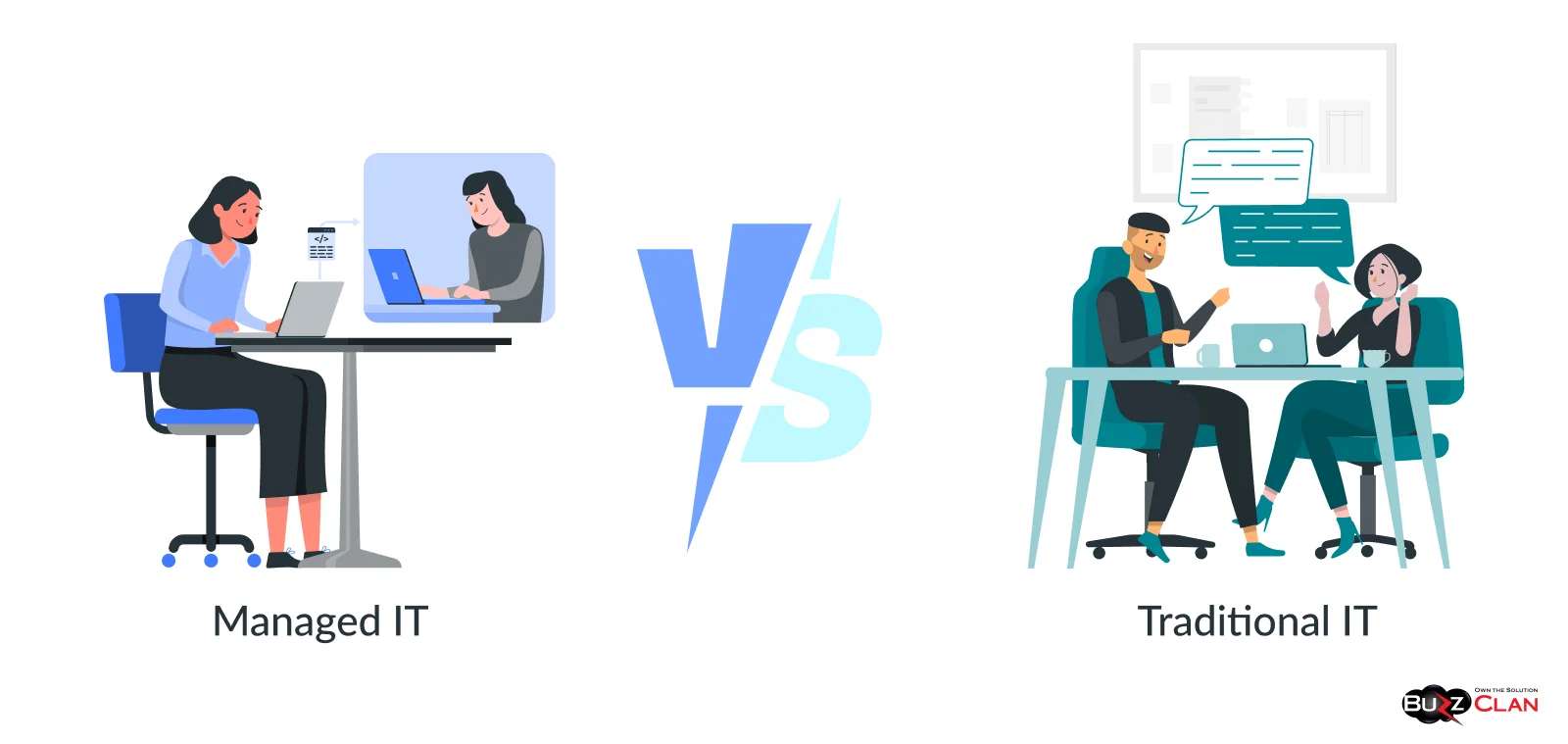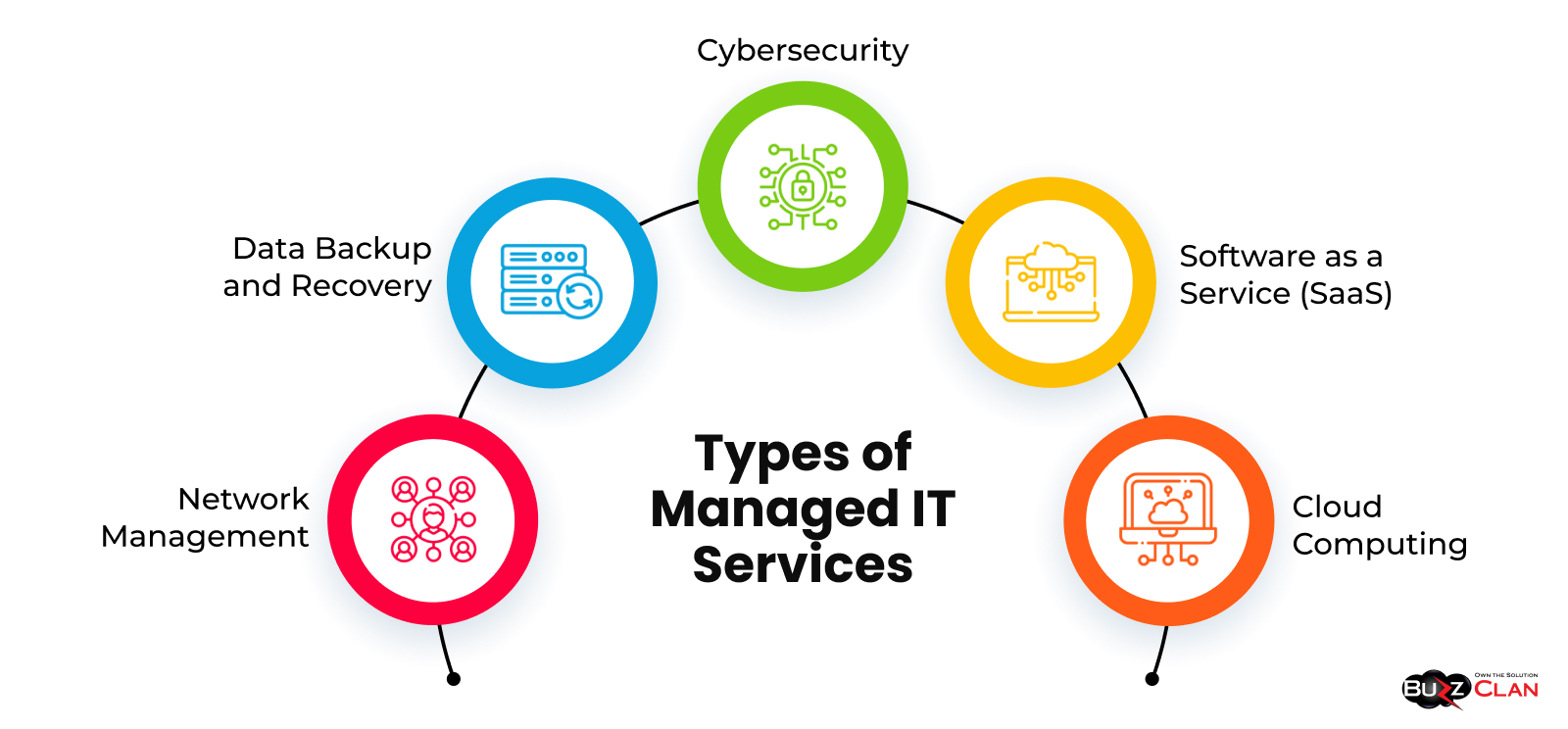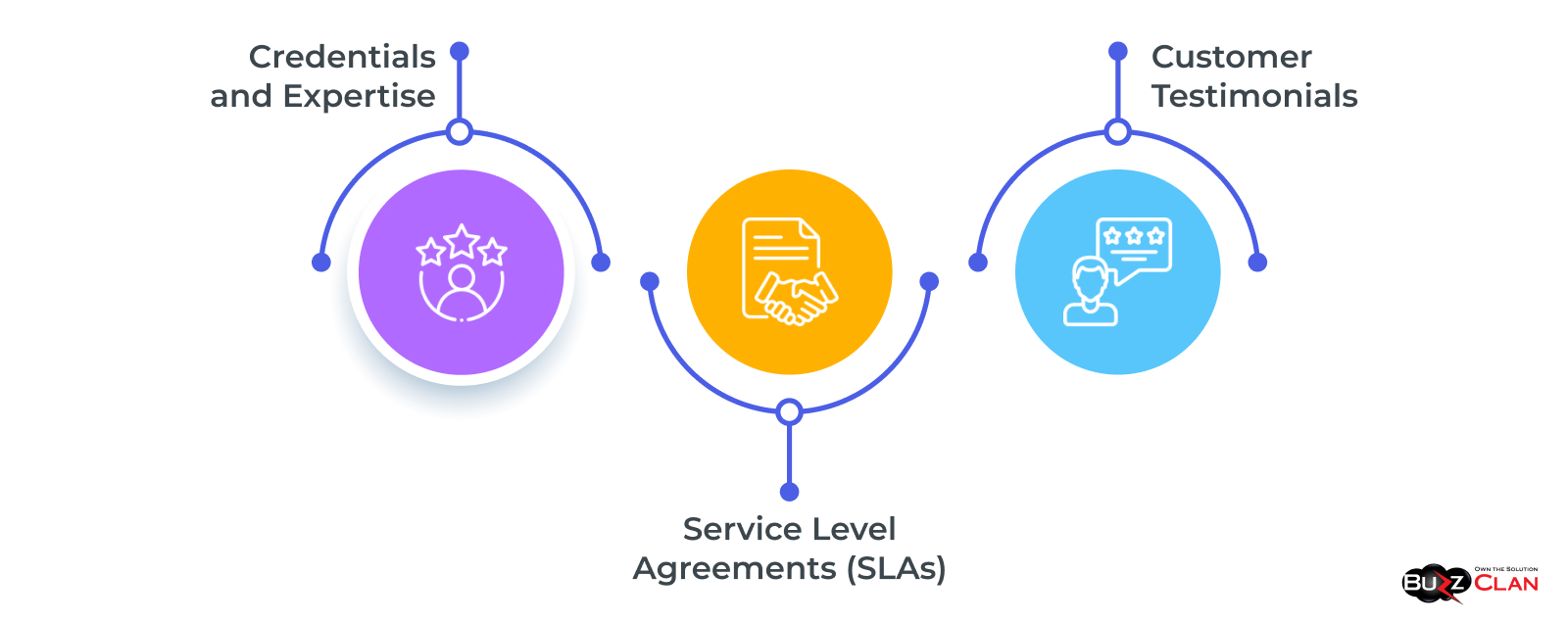Managed IT Services: Your Complete Guide to Streamlining Business Operations
Priya Pillai
Dec 22, 2023
Introduction
Businesses increasingly rely on intricate IT infrastructures to function in an age where technology is as ubiquitous as the air we breathe. Enter Managed IT Services—a concept that goes beyond simple IT support to offer a full-service partnership to streamline operations, enhance security, and deliver technological nirvana. In layperson's terms? Imagine having a tech wizard by your side, 24/7, making sure your business runs like a well-oiled machine. Tempting, isn't it?
But why is there so much buzz about Managed IT Services in modern businesses? Managing IT in-house can be like navigating a labyrinth without a map. You've got networks to maintain, data to protect, and an ever-evolving landscape of cyber threats that would give even James Bond a run for his money. Outsourcing these tasks to experts frees up time for businesses to focus on what they do best and provides a shield of expertise that can be the difference between smooth sailing and a Titanic-like disaster.
So, what's the catch? Like any powerful tool, Managed IT Services come with their own complexities, costs, and considerations.
Consider this your go-to guide for all things Managed IT. Whether you're a small business owner looking for a cost-effective way to manage your tech needs, an enterprise leader contemplating a scalable solution, or just a curious soul trying to keep up with the jargon. This pillar page has something for everyone.
What Are Managed IT Services?
Definition and Scope
Managed IT Services refer to outsourcing various IT functions to a third-party provider. These services can encompass anything from network management and data backup to cybersecurity and software updates. The core objective is to improve operational efficiency and enable internal teams to focus on strategic activities rather than day-to-day IT management.
History and Evolution
Ah, the good old days—when "technology management" meant keeping the office printer jam-free. Times have changed, and so have the complexities around IT. Managed IT Services is rooted in the break-fix model, where businesses would call IT experts only when something went wrong. However, a more proactive approach was needed with the growing importance of technology in business operations. Enter Managed IT Services—providing not just a stitch in time but an entire quilt of ongoing support and expertise.
Managed IT vs. Traditional IT

Regarding IT management, businesses generally have two avenues—Managed IT or Traditional IT. The critical difference lies in the approach and the level of involvement.
- Managed IT: Here, a third-party service provider takes full responsibility for the IT infrastructure, offering 24/7 monitoring, regular updates, and proactive issue resolution.
- Traditional IT: In this model, the in-house IT team is responsible for all activities, including maintenance, updates, and troubleshooting. Help from external experts is sought only when a problem arises.
To understand the differences, advantages, and disadvantages of both, read our In-Depth Guide to Managed IT vs. Traditional IT.
Core Components
When we talk about Managed IT Services, we're essentially discussing an ensemble of services that can be tailored to a business's unique needs. Here are some of the core components:
- Network Management: Ensures secure and efficient communication between your business systems.
- Cloud Services: Includes everything from cloud migration to ongoing management.
- Cybersecurity: Protects your business from the dark forces of the internet (no lightsaber included).
- Data Backup and Recovery: Because losing data is like losing your car keys—annoying, costly, and completely preventable.
- Software as a Service (SaaS): Involves the management of software applications, including updates and user access.
Why Do Businesses Need Managed IT Services?
In the grand tapestry of business operations, IT threads are woven in almost every aspect. Whether it's sales, marketing, human resources, or finance, technology plays a pivotal role. But why entrust these critical functions to a third party?
Operational Efficiency
First on the docket is operational efficiency—or, as we like to call it, the "make everyone's life easier" factor. Managed IT Services work like a finely-tuned orchestra, coordinating various elements to produce a harmonious performance.
From ensuring network uptime to implementing productivity-boosting tools, these services are designed to make your business operations smooth and efficient. For a comprehensive look at this subject, check out How Managed IT Services Boost Operational Efficiency.
Risk Mitigation
Imagine a scenario where your business suffers a data breach. The fallout can be catastrophic—both financially and reputationally. Managed IT Services act as a fortified wall, equipped with the latest cybersecurity measures to protect against threats. The goal is to identify and neutralize risks before they become full-blown crises.
Cost Savings
Budgets—every business has them, and no one likes going over them. Maintaining an in-house IT team can be expensive, especially when you factor in salaries, benefits, and training. Outsourcing these tasks can lead to significant cost savings. You get access to a team of experts at a fraction of the cost, allowing your budget to breathe a little easier.
Scalability and Flexibility
Business needs are like the weather—constantly changing. Managed IT Services offer the scalability to grow as your business expands and the flexibility to adapt to new technologies and processes. Whether you're a startup on the brink of exponential growth or an established enterprise venturing into new markets, these services can be tailored to your evolving needs.
Types of Managed IT Services

In Managed IT Services, one size certainly does not fit all. The services are as varied as the toppings on a pizza, and choosing the right combination can make all the difference. Below, we'll explore the types of Managed IT Services businesses commonly use.
Network Management
Think of your business network as the highway that connects all your operations. Network Management ensures this highway is free of potholes and traffic jams. Services can include network setup, monitoring, optimization, and troubleshooting. The goal is to provide a seamless communication flow, faster data transfer, and minimal downtime.
Cloud Computing
Cloud services have stormed the business world like a summer blockbuster, offering unlimited scalability and anywhere access to data and applications. Managed Cloud Computing services include cloud migration, management, and support. Providers may also offer hybrid cloud solutions that combine both private and public cloud infrastructures. Check out A Deep Dive into Managed Cloud Computing for more insights.
Cybersecurity
In the digital realm, your business is constantly under siege by cyber threats. Cybersecurity services aim to protect your fortress by guarding against malware, phishing, ransomware, and other nefarious activities. Features can include firewalls, antivirus software, and real-time monitoring.
Data Backup and Recovery
Let's face it—accidents happen. A wrong click here or a system failure there, and your valuable data could vanish into the ether. Data Backup and Recovery services are your safety net, offering secure storage solutions and disaster recovery plans to keep your business data safe and accessible.
Software as a Service (SaaS)
Software management can be a logistical nightmare, especially as your business grows. SaaS management services handle everything from software deployment to updates and licensing. This allows your team to access the latest software tools without the hassle of manual management.
To delve deeper into these types, including how to select the right services for your business, visit our Exploring the Different Types of Managed IT Services
Advantages and Disadvantages
In the grand scheme of business decisions, opting for Managed IT Services is significant. We've compiled a list of pros and cons to aid in your decision-making process. It's like a teeter-totter of IT management—let's find out which side weighs heavier for you.
Advantages
Expertise
When you opt for Managed IT Services, you hire a team of IT ninjas—experts armed with the latest tools and knowledge to keep your business running smoothly. This expertise can be particularly beneficial for small to medium-sized businesses that may not have the resources to maintain a full-fledged IT department.
Focus on Core Business
Have you ever tried juggling? It's hard. Now, imagine juggling while running a business. Outsourcing your IT needs allows you to focus on what you do best—running your core business. Leave the IT circus to the professionals and put your energy where it truly counts. For a deeper understanding, you might find Advantages of Outsourcing to a Managed IT Service helpful.
Disadvantages
Loss of Control
Handing over the reins of your IT infrastructure to an external entity could mean relinquishing a certain degree of control. While Managed IT Service providers aim for transparency and robust governance, there may be times when you wish you had more say in day-to-day IT decisions.
Costs
While Managed IT Services offer the allure of cost savings, there's a flip side. The initial setup and ongoing costs can add up, particularly if you opt for a range of services. Moreover, hidden costs can lurk in the fine print of contracts, so thorough due diligence is advised. For a detailed look at this aspect, check out our Risks and Downsides of Managed IT Services.
Weighing the pros and cons is essential in determining whether Managed IT Services are the right fit for your business. If the scales tip towards the advantages, you're likely on the path to smoother operations and peace of mind. If the disadvantages give you pause, it might be worth exploring alternatives or hybrid solutions that offer a balance of in-house and outsourced IT support.
Costs and Budgeting
Money talks. And when it comes to Managed IT Services, understanding the financial implications is as essential as knowing the technical aspects. Let's dive into the dollars and cents of it all.
Pricing Models
Managed IT Services come with a variety of pricing models, each with its own set of implications:
- Flat-Rate Pricing: A one-size-fits-all approach offering unlimited services for a fixed monthly fee.
- Per-Device Pricing: Costs are calculated based on the number of devices managed.
- Tiered Pricing: Different service levels are available, each with its price tag.
- A La Carte Pricing: Pick and choose specific services, effectively building your package.
Hidden Costs to Look Out For
Ah, the dreaded fine print—where devils and details cohabitate. While Managed IT Services can offer cost savings, be aware of potential hidden costs such as:
- Setup Fees: The initial costs for configuring your systems.
- Onboarding Costs: Training and integration expenses.
- Exit Fees: Costs incurred if you decide to terminate the contract early.
ROI Calculation
Return on Investment (ROI) is the magic number to justify your expenditure. Calculating ROI for Managed IT Services can involve factors like:
- Cost Savings: Reduced operational and labor costs.
- Increased Efficiency: Time saved that can be allocated to revenue-generating activities.
- Risk Mitigation: The value of preventing potential losses from cyber threats or downtime.
How to Choose a Managed IT Service Provider

Choosing a Managed IT Service Provider is like choosing a life partner for your business—get it right, and you'll be sailing into the sunset. Get it wrong, and, well, let's not go there. Here are some factors to consider to ensure your choice is a match made in digital heaven.
Credentials and Expertise
In Managed IT, credentials are your knight in shining armor. Look for providers with certifications from reputable organizations and a team of experienced professionals. Expertise in your industry is a cherry on top, offering insights tailored to your business needs.
Customer Testimonials
While a Managed IT provider may serenade you with promises, customer testimonials are the real love letters you should read. Reviews and case studies provide an unfiltered view of what you can expect. Don't just skim through the five-star reviews; delve into the nitty-gritty of less favorable testimonials to get the complete picture.
Service Level Agreements (SLAs)
An SLA is like a prenuptial agreement for your business relationship. It outlines the level of service you can expect, the metrics used to measure performance, and the remedies available in case of shortcomings. Read the SLA carefully, and don't hesitate to negotiate terms that align with your business requirements.
Questions to Ask Potential Providers
Here's where you go in full-on detective mode. Prepare a list of questions to probe potential providers:
- What services do you offer, and can they be customized to fit my needs?
- How do you approach cybersecurity?
- What is your response time for resolving issues?
- Can you provide references from other businesses in my industry?
Check out Questions to Ask When Choosing a Managed IT Service Provider for an exhaustive list of questions and why they matter.
Choosing a Managed IT Service Provider is not a decision to be taken lightly. Credentials, customer testimonials, SLAs, and the right questions can guide you toward a fruitful partnership. Remember, the goal is not just to find a provider but to find the right provider for your unique business needs.
Case Studies
They say a picture is worth a thousand words, but a well-crafted case study is worth its weight in gold (or at least in increased customer trust and engagement). Below, we delve into three scenarios where Managed IT Services played a pivotal role.
Case Study 1: Small Business
The Challenge
A boutique marketing agency grappled with sluggish network speeds and frequent downtime, affecting productivity and client satisfaction.
The Solution
They partnered with BuzzClan for network management and cybersecurity.
The Outcome
- 50% increase in network speed
- Zero downtime in the last six months
- Enhanced cybersecurity measures led to a 40% reduction in spam and phishing attempts.
Case Study 2: Enterprise
The Challenge
A multinational conglomerate faced the mammoth task of migrating their complex IT systems to the cloud.
The Solution
MegaCorp enlisted the help of BuzzClan for cloud migration and management.
The Outcome
- Successful migration of 90% of IT systems to the cloud within the stipulated time frame
- 20% reduction in operational costs
- It improved data accessibility for remote teams.
Case Study 3: Non-Profit Organization
The Challenge
CharityWorks, a non-profit organization, had a limited budget for IT but needed to manage a large volume of sensitive donor information securely.
The Solution
The organization chose a Managed IT Service provider offering tailor-made services for non-profits, focusing on data security and backup.
The Outcome
- Secure storage and management of donor data
- 99.9% uptime guaranteed, ensuring smooth operations
- Cost-effective solution that fits within their limited budget
Explore our Case Studies in Managed IT Success for more examples and in-depth analyses.
Future of Managed IT Services
In the world of technology, the only constant is change. While Managed IT Services is already a cornerstone of modern business, the future holds even more exciting possibilities. Let's jump in our metaphorical DeLorean and explore what the future might look like.
Trends to Watch
- Artificial Intelligence and Automation: As AI becomes increasingly sophisticated, expect a surge in AI-driven IT management solutions. These technologies can automate routine tasks, freeing human resources for more strategic activities.
- Cybersecurity Evolution: The bad news? Cyber threats are becoming more advanced. The good news? So are cybersecurity measures. Future Managed IT Services will likely incorporate more robust, adaptive security protocols.
- Edge Computing: With the proliferation of IoT devices, edge computing will play a more significant role. This means managing not just centralized data centers but also remote servers and devices.
- Sustainability: As businesses become more environmentally conscious, Managed IT Services focusing on energy-efficient solutions will likely gain traction.
Integration with Emerging Technologies
- Blockchain: This technology can potentially revolutionize IT systems' data security and transaction integrity.
- Internet of Things (IoT): IoT will increasingly become a part of business operations, and Managed IT Services must adapt to manage these additional endpoints.
- Augmented Reality (AR) and Virtual Reality (VR): These technologies can be game-changers in training, marketing, and customer service. Managed IT will likely offer services to integrate and manage AR/VR technologies.
So, what does this mean for businesses? The future of Managed IT Services promises more than just incremental changes; we're looking at a paradigm shift. Whether it's harnessing the power of AI or adapting to the growing importance of sustainability, staying ahead of these trends can give your business a competitive edge.
Conclusion
And there we have it—the A to Z of Managed IT Services. If you've journeyed with us from the introduction, pat yourself on the back. You're now armed with valuable insights that can guide your business through the complex landscape of Managed IT.
Summary
- What Are Managed IT Services: Outsourced IT solutions aimed at improving operational efficiency and mitigating risks.
- Why Businesses Need Them: For enhanced productivity, cost savings, and a strategic edge in today's competitive marketplace.
- Types of Services: From network management and cloud computing to cybersecurity and data backup, there's a service for every need.
- Advantages and Disadvantages: While the pros include expertise and focus on core business, the cons can be costs and a loss of control.
- Costs and Budgeting: Understanding the pricing models and ROI can help you make an informed financial decision.
- Choosing a Provider: Credentials, testimonials, and SLAs are your guiding stars in picking the right partner.
The ball is in your court now that you're well-versed in Managed IT Services. Whether you're a small business eyeing growth, an enterprise aiming for efficiency, or a non-profit focused on impact, Managed IT Services offer a pathway to your goals.
If you're ready to take the plunge, don't hesitate to contact our team of experts for a consultation tailored to your specific needs.
FAQs

Get In Touch
Follow Us
Table of Contents
- Introduction
- What Are Managed IT Services?
- Managed IT vs. Traditional IT
- Why Do Businesses Need Managed IT Services?
- Types of Managed IT Services
- Costs and Budgeting
- How to Choose a Managed IT Service Provider
- Questions to Ask Potential Providers
- Case Studies
- Future of Managed IT Services
- Conclusion
- Summary
- FAQs
- Get In Touch
